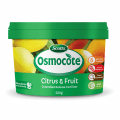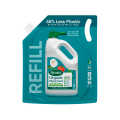|
TYPE |
FREQUENCY |
METHOD |
PROS |
CONS |
|
1. Organic based composts & soil improvers |
4-6 times a year |
1. Spread a layer of soil improver and compost over the soil. 2. Work the organic matter into the soil using a garden fork. 3. Water 4. Mulch |
Organic solution
Can be expensive
Improves soil |
Back-breaking
Must be repeated frequently
Can be smelly
Take more time than other methods
|
|
2.Instant hit granular or powder |
12 times a year |
1. Using a glove, take a handful of granulated fertiliser and sprinkle it over the soil surface. 2. Water 3. Reapply as necessary |
Easy to apply
Includes a wide range of nutrients
Quick injection of nutrients |
Can contain trace amounts of toxic chemicals
Dumps nutrients quickly
Needs frequent applications
Dusty – wear gloves and mask
Wasted nutrients |
|
3.Slow release fertiliser |
4-6 times a year |
1. Using a glove, take a small amount of slow release fertiliser and sprinkle it around the garden. 2. Water 3. Reapply as necessary |
Consistent particle size for even release of nutrients
Easy to apply
Wide range of formulations |
Continuously release nutrients into the soil until they dissolve completely
Wasted nutrients |
|
4.Controlled release fertiliser |
2 times a year |
1. Lightly sprinkle the controlled release fertiliser where needed. 2. Water 3. Reapply in 6 months |
Balanced release of nutrients – just when plants need it
No wasted nutrients
Easy to apply
Targeted feeding |
May seem way more expensive at first, but is actually much cheaper in the long run |








